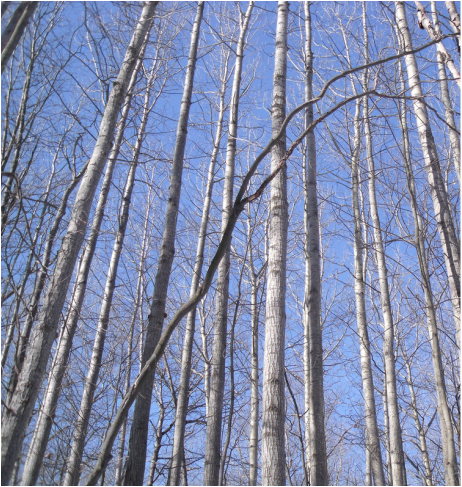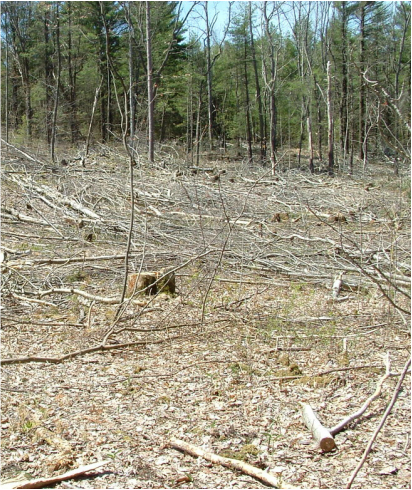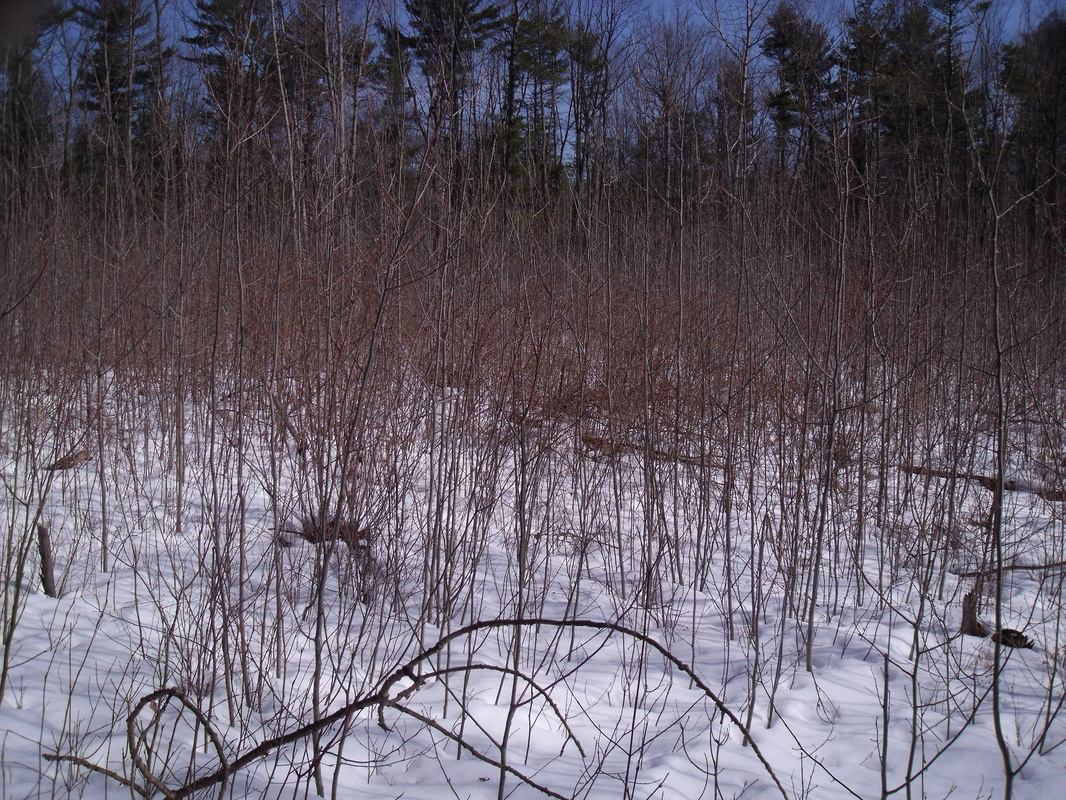Clear Cut
Undeniably the most controversial harvesting system used in forestry today. This discussion will focus on if and when the system should be used in central and southern Ontario. The above examples are of a 1 hectare poplar clear cut. The initial stand was 93% poplar with very little hardwood or conifer regeneration on the ground. The poplar was 80 years old with a basal area of 42 m2/ha. Every single stem in the patch was felled with any commercial material utilized. Poplar require full sunlight to grow with soil temperatures reaching 19 degrees celsius to successfully sucker from existing roots. The young suckers allow for browsing opportunities for deer, moose etc. while young grouse will be protected from avian predators. The bottom photo is three years after the initial harvest.



